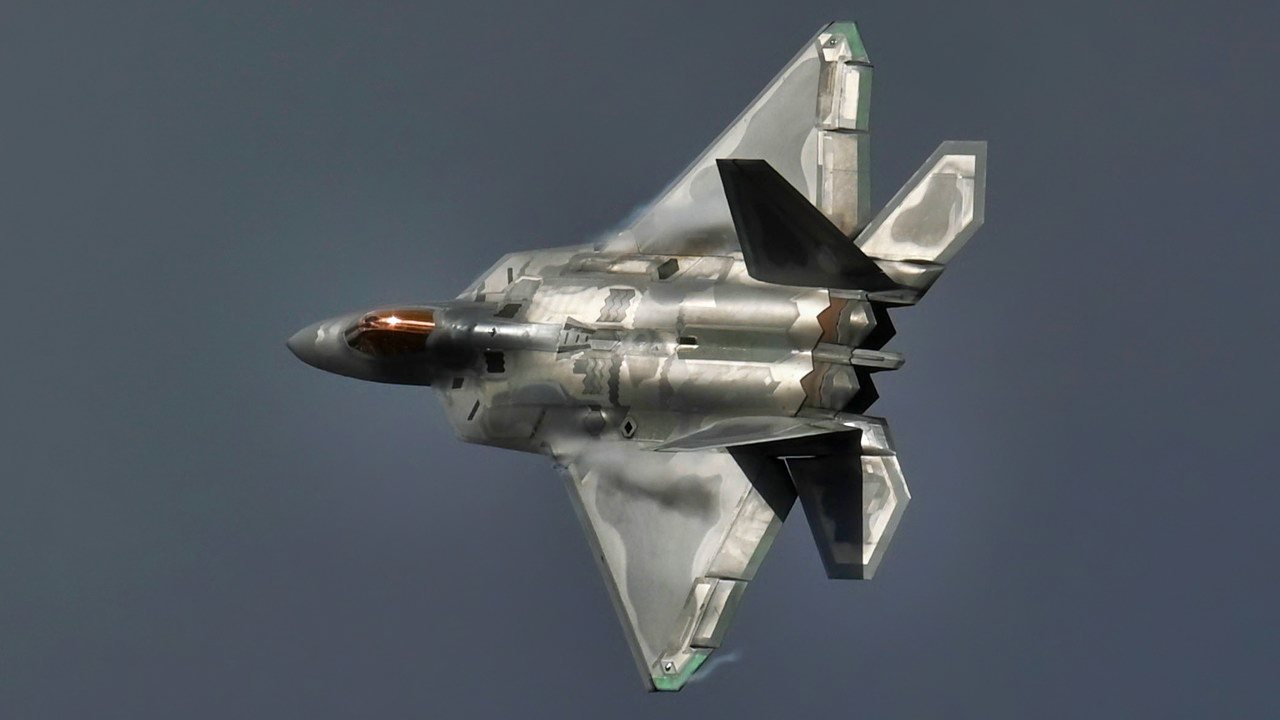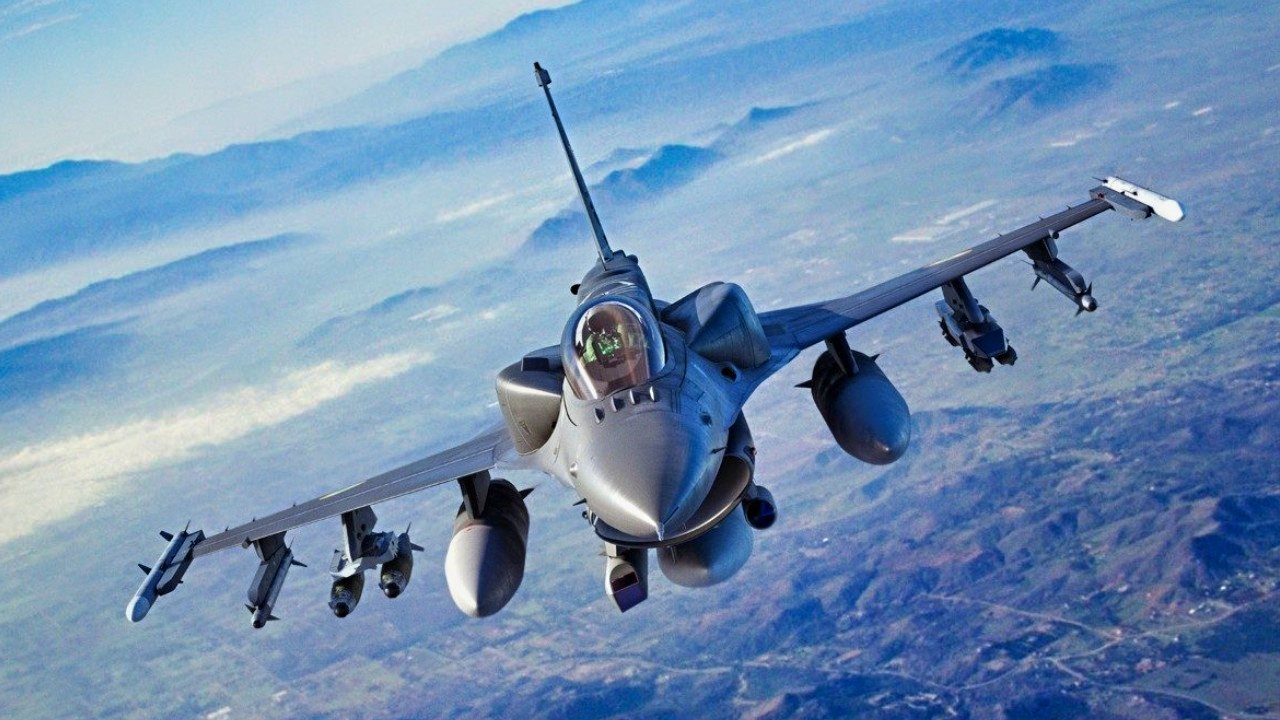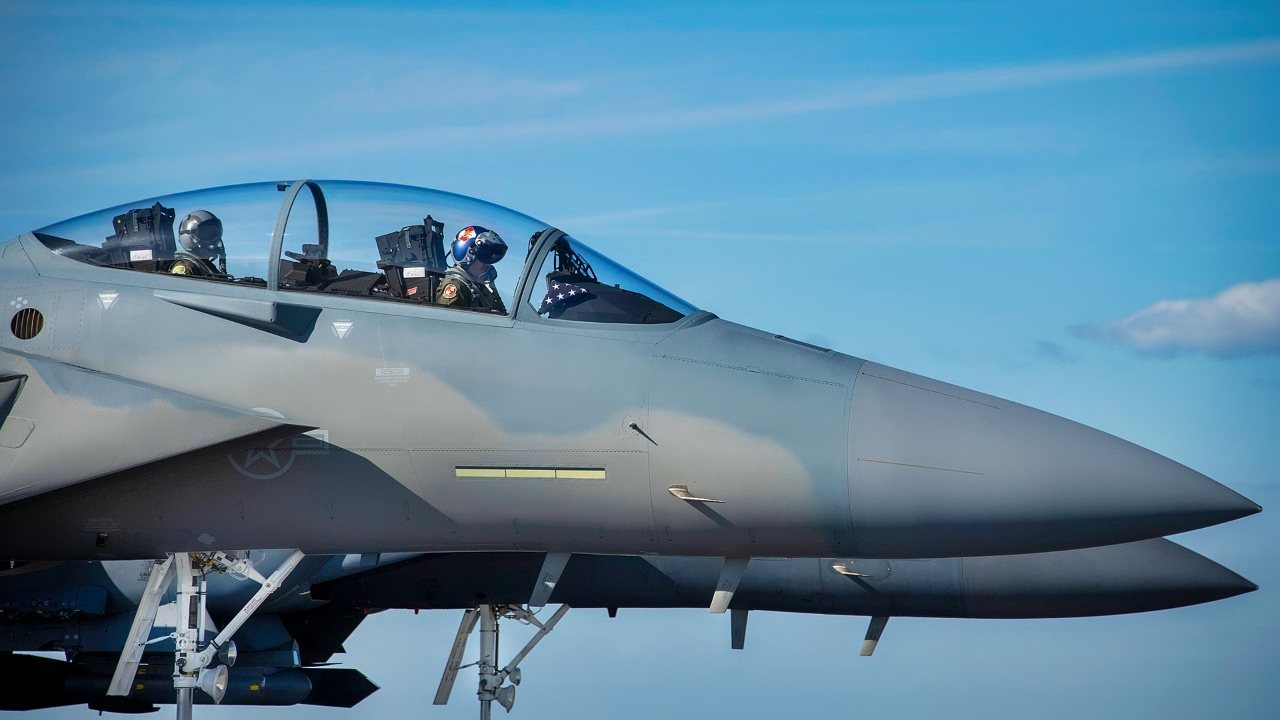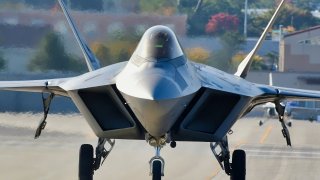Ranked: The Top 4 U.S. Air Force Fighters
From fighter jets to stealth bombers and attack aircraft, the U.S. Air Force flies the world’s leading fleet of versatile, capable, and lethal aerial platforms.
From fighter jets to stealth bombers and attack aircraft, the U.S. Air Force flies the world’s leading fleet of versatile, capable, and lethal aerial platforms.
While all of the Air Force’s current airframes are essential, its fighter jets are perhaps the most recognizable.
The F-35A Lightning II
The Lockheed Martin F-35 Lightning II is the pinnacle of fifth-generation fighter technology. In the platform’s relatively short service history, it has amassed nearly 800,000 flight hours in the service of 20 nations. A multirole aircraft, the powerhouse jet provides surveillance, intelligence, reconnaissance, and electronic warfare capabilities.

Three F-35 variants were designed to meet the unique needs of U.S. military branches. The Air Force flies the F-35A, the conventional version. Like traditional fighters, this specific variant requires approximately 8,000 feet of clean, manicured conventional runway to safely take off and land. Since the F-35A does not necessitate more elaborate take-off and landing gear, it remains the lowest-cost and lightest of the Lightning II family.
The F-22 Raptor
The F-22 may be the Air Force’s older fifth-generation fighter, but the mighty Raptor remains arguably the most sophisticated jet of its kind.
The F-22 was introduced as the first fighter to combine stealth, supermaneuverability, and supercruise in a single airframe. The F-22’s greatest attributes are its small radar cross-section and twin thrust-vectoring F119 turbofan engines. These assets allow the jet to evade detection and fly at speeds greater than Mach 2.8.

The Air Force is inclined to retire the platform altogether in order to allocate more funds to its Next Generation Air Dominance program. But until that sixth-generation platform hits the production phase, the remaining fleet of F-22s is essential.
The F-16 Fighting Falcon
Thanks to upgrades, the Air Force’s fleet of F-16 Fighting Falcons remains more than relevant. The F-16 is one of the most prolific fourth-generation platforms, and one of the oldest and most storied fighter jets still flying today. While the platform may be aging, there are more than 2,000 F-16s currently operational.
Major upgrades lead manufacturer Lockheed Martin to believe the fighter could continue to serve the Air Force well into the 2060s.

The latest Block 70/72 variants feature conformal fuel tanks on top of the fuselage, increasing fuel capacity and range. These jets also share an advanced scanned APG-83 AESA radar on par with those fielded by the F-22 and F-35.
The F-15 Eagle
The F-15 Eagle is another aging platform given new life by serious upgrades. Boeing’s latest Eagle variant, the F-15EX II, can reach a top speed of nearly Mach 3.0 at full throttle. The upcoming 4.5-generation fighter is designed to carry a massive payload of up to 30,000 pounds of munitions, making it the most heavily armed aircraft in the service. Additionally, it can be equipped with a wide array of weaponry to support both ground support and air superiority roles.

Two General Electric F100-PW-229 turbofans with afterburners power the platform, each able to produce around 29,000 pounds of thrust. The Eagle II program was first approved under the National Defense Authorization Act for the 2020 fiscal year.
The U.S. Air Force Rules
With a fleet including the F-35A Lightning II, F-22 Raptor, F-16 Block 70/72, and F-15 EX Eagle II, the Air Force is ready for most contingencies.
All of these platforms would undoubtedly be essential if a conflict between Beijing and Washington were to arise in the near future.
About the Author: Maya Carlin
Maya Carlin, National Security Writer with The National Interest, is an analyst with the Center for Security Policy and a former Anna Sobol Levy Fellow at IDC Herzliya in Israel. She has by-lines in many publications, including The National Interest, Jerusalem Post, and Times of Israel. You can follow her on Twitter: @MayaCarlin.


